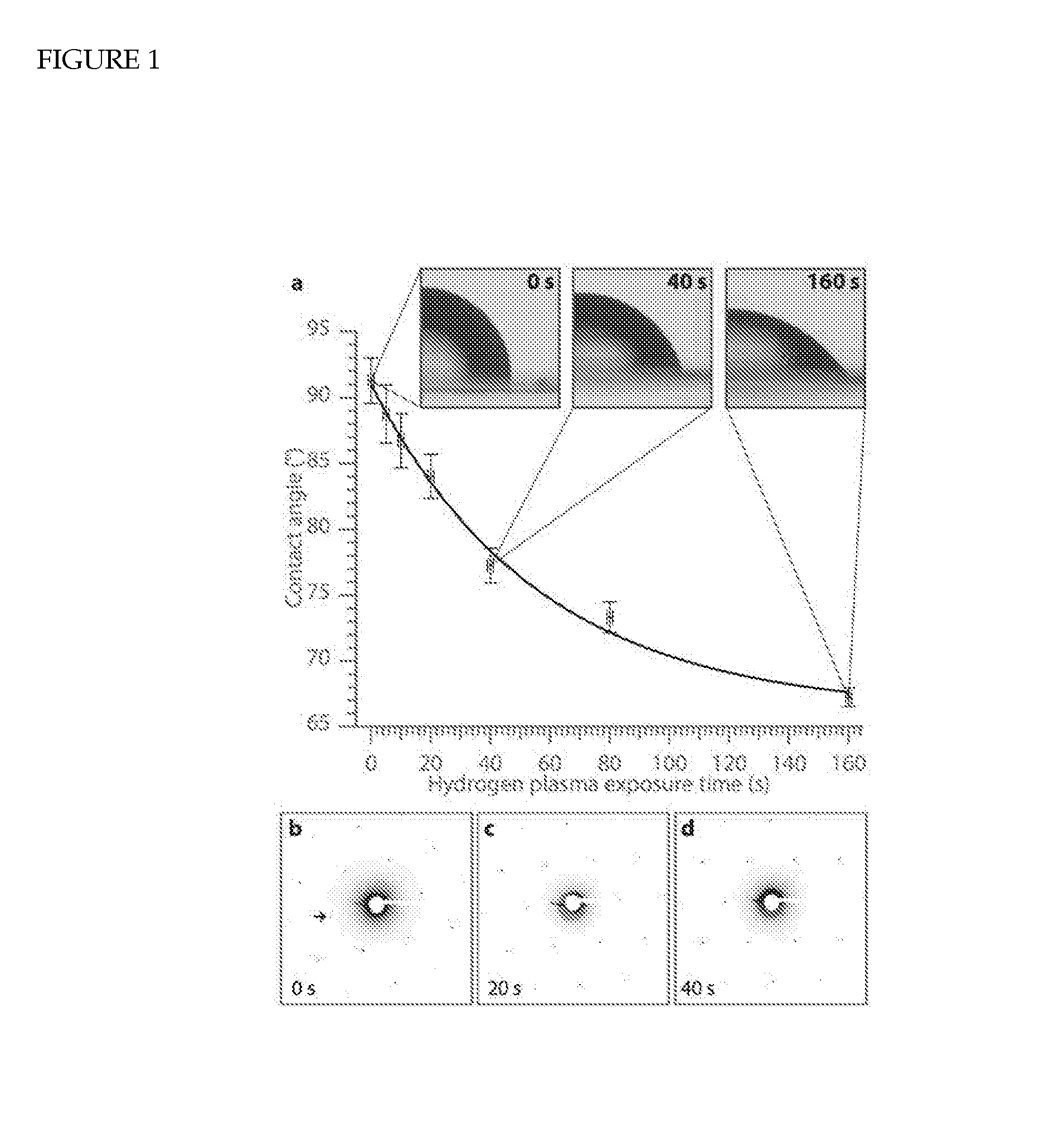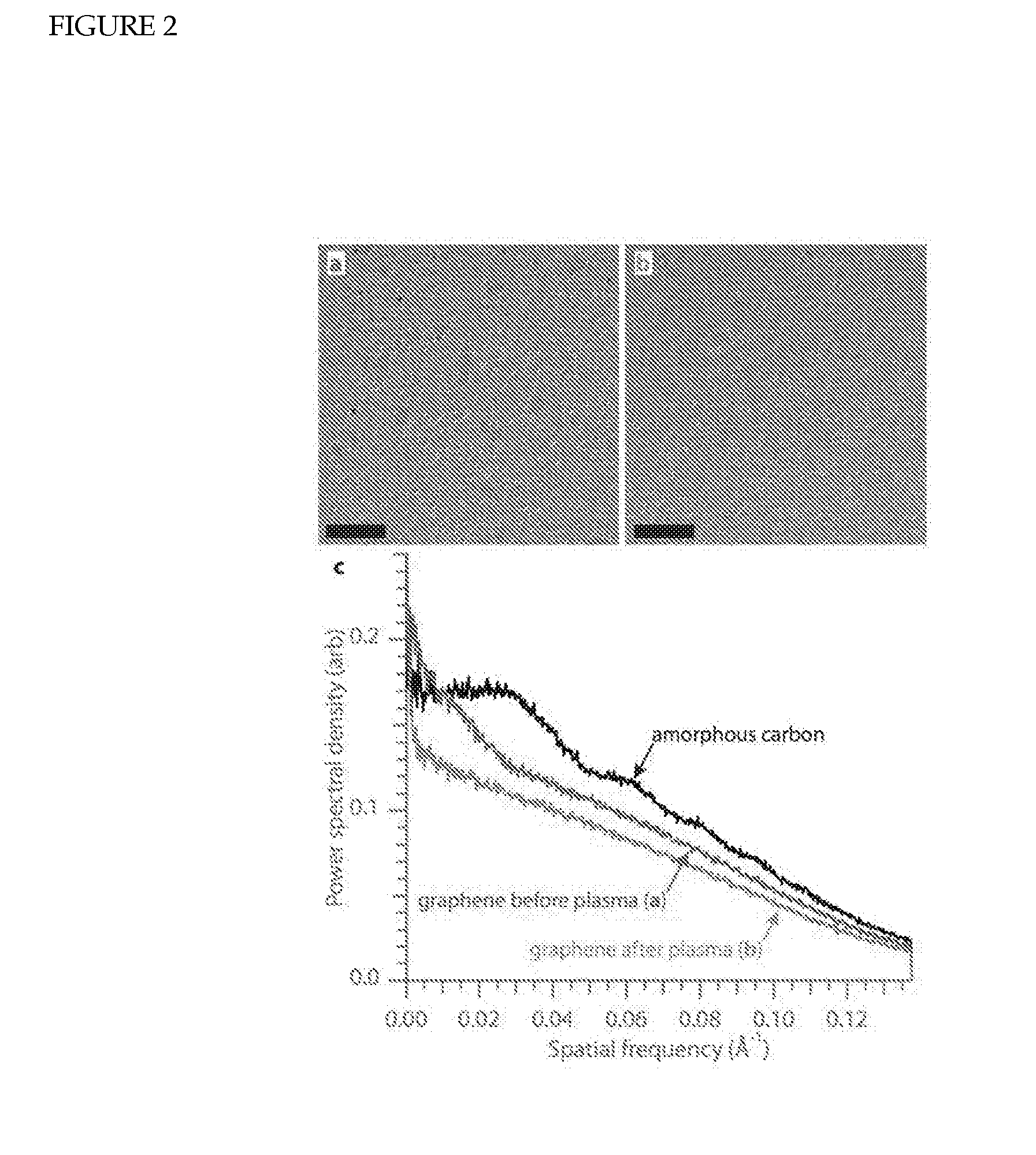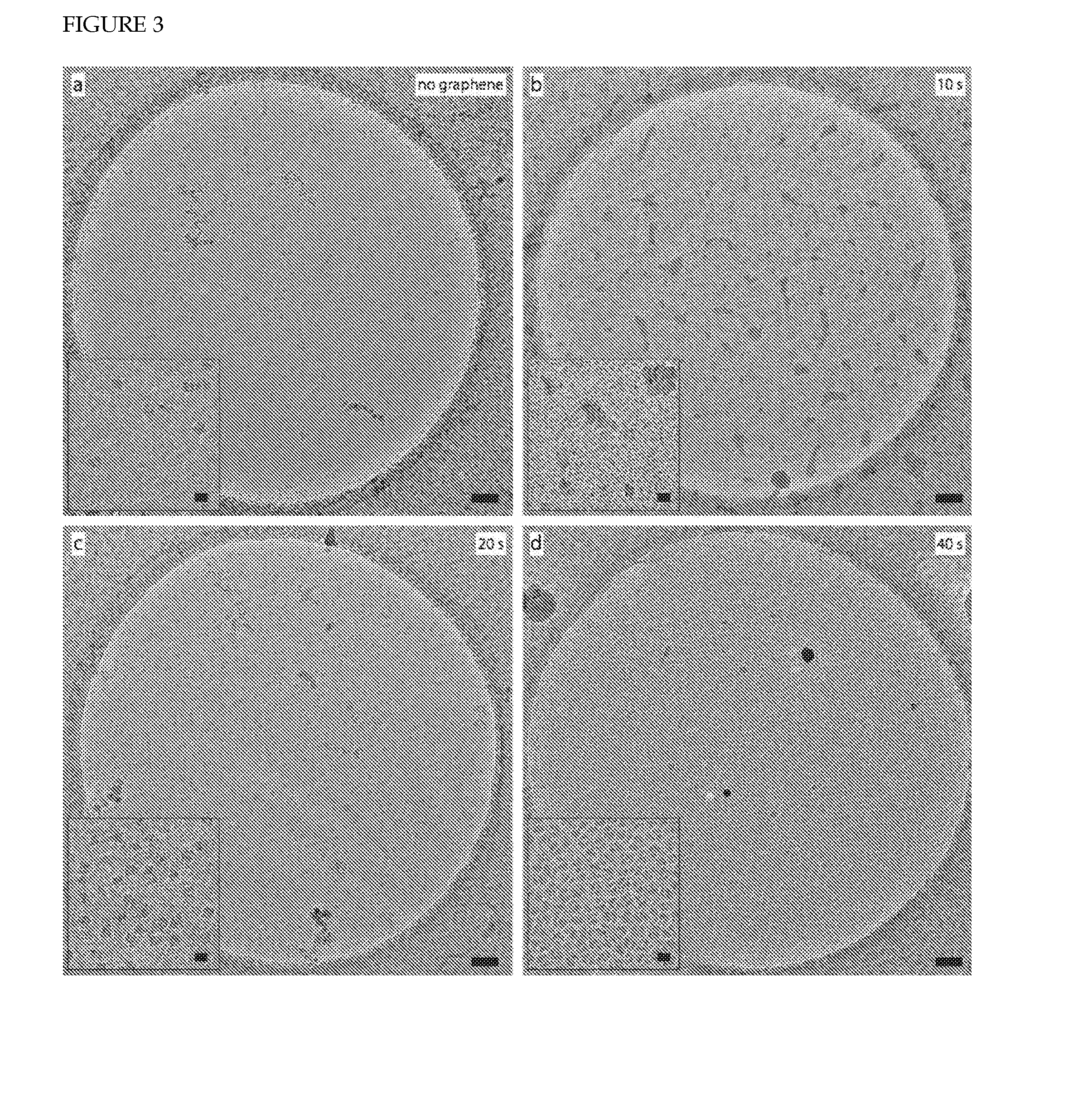Graphene modification
- Summary
- Abstract
- Description
- Claims
- Application Information
AI Technical Summary
Benefits of technology
Problems solved by technology
Method used
Image
Examples
example 1
Hydrogenation of Graphene
[0203]In this example we demonstrate a method for making a partially hydrogenated graphene.
[0204]We apply a hydrogen ion or hydrogen atom to the surface of the graphene (in this example by a hydrogen plasma).
[0205]The hydrogen plasma is applied at an energy in the range 1 to 21 eV.
[0206]To measure the change in hydrophobicity of a graphene surface in response to hydrogenation (in this example by a hydrogen plasma), we measured the static contact angle between water, air and graphene as grown by CVD on a copper substrate. A 1 μl water droplet was applied to graphene on copper and imaged using a calibrated optical microscope attached to a digital camera (FIG. 1a insets). Each measurement was repeated for sequentially increasing doses of exposure to a pure hydrogen plasma at 50 mTorr and with energy (electron temperature) estimated to be approx. 10-15 eV, as detailed in the methods. The results of these measurements are shown in FIG. 1a. We found that the conta...
example 2
Graphene Cleaning
[0209]In this example we demonstrate that small atom plasma treatment such as hydrogen plasma treatment removes surface contaminants on graphene.
[0210]In particular we show a method for cleaning a graphene surface, comprising contacting said graphene surface with a hydrogen plasma. The time of contact is a time sufficient to remove surface impurities, as shown below.
[0211]We studied graphene's properties as a substrate for electron microscopy before and after plasma treatment, and compared it to amorphous carbon. Suspended graphene as transferred to a Quantifoil grid, when examined with electrons under conditions typical for imaging proteins (300 keV, 25 e− / Å2, 39000× magnification), shows significant amounts of surface contamination (FIG. 2a and FIG. 7a). Exposing the graphene to 30 seconds of hydrogen plasma removes most of the surface contamination (FIG. 2b and FIG. 7b) but increases the background signal level in the image slightly due to the addition of hydroge...
example 3
Tuning of Graphene Surface
[0213]In this example we show the control of the adsorption of proteins to graphene by partial hydrogenation of the graphene according to the present invention. Having shown that we can control the hydrophobicity of graphene, we then tested hydrogen plasma treated graphene as a substrate for cryo-EM using 70S ribosomes. We transferred monolayer graphene onto Quantifoil EM grids, subjected them to various doses of hydrogen plasma, and used them to prepare vitrified samples of 70S ribosomes. FIG. 3a shows that on grids without graphene, very few 70S particles are visible in the vitreous ice, as most are attracted to the surface of the Quantifoil carbon and the edges of the holes (note the ring of ribosomes at the edge of the hole). Using identical freezing and blotting conditions with graphene grids treated with 10 seconds of hydrogen plasma, only small patches of vitreous ice were visible (FIG. 3b). This is indicative of the incomplete wetting of the graphen...
PUM
 Login to View More
Login to View More Abstract
Description
Claims
Application Information
 Login to View More
Login to View More - R&D
- Intellectual Property
- Life Sciences
- Materials
- Tech Scout
- Unparalleled Data Quality
- Higher Quality Content
- 60% Fewer Hallucinations
Browse by: Latest US Patents, China's latest patents, Technical Efficacy Thesaurus, Application Domain, Technology Topic, Popular Technical Reports.
© 2025 PatSnap. All rights reserved.Legal|Privacy policy|Modern Slavery Act Transparency Statement|Sitemap|About US| Contact US: help@patsnap.com



